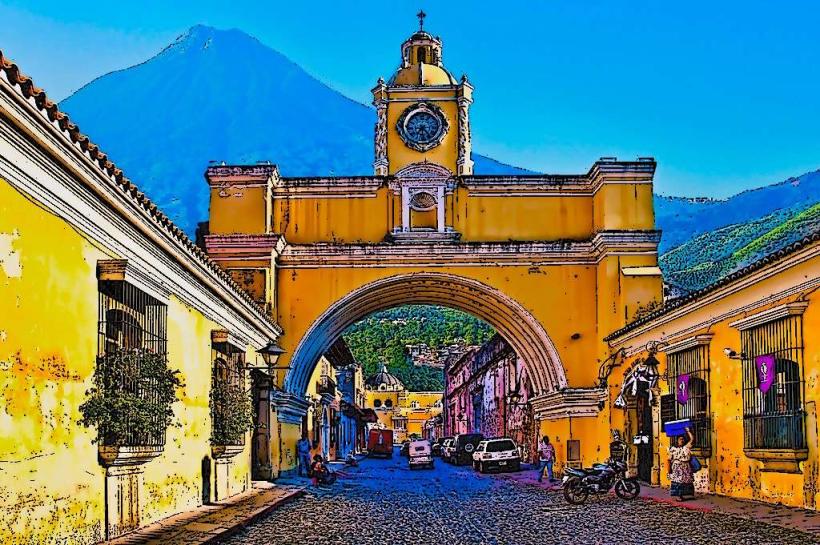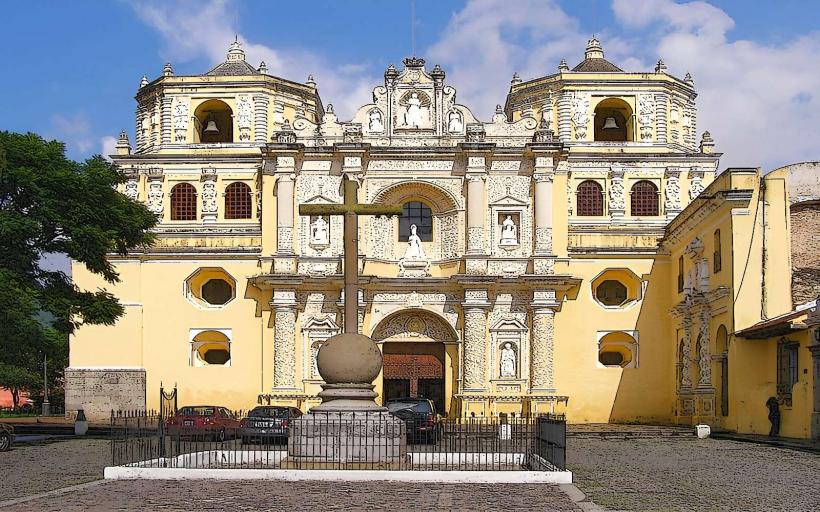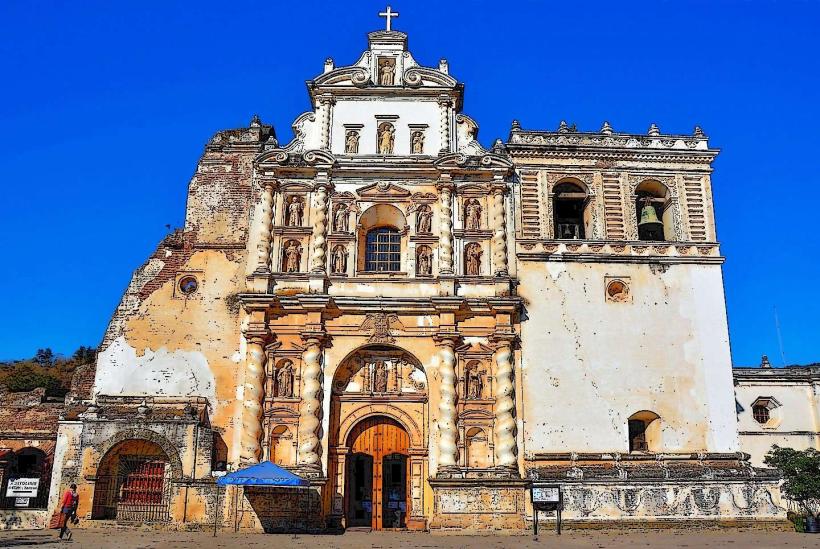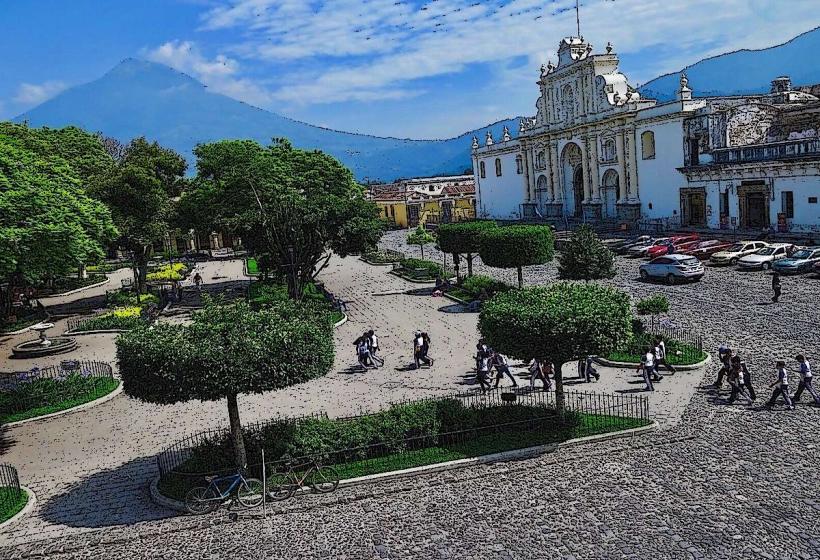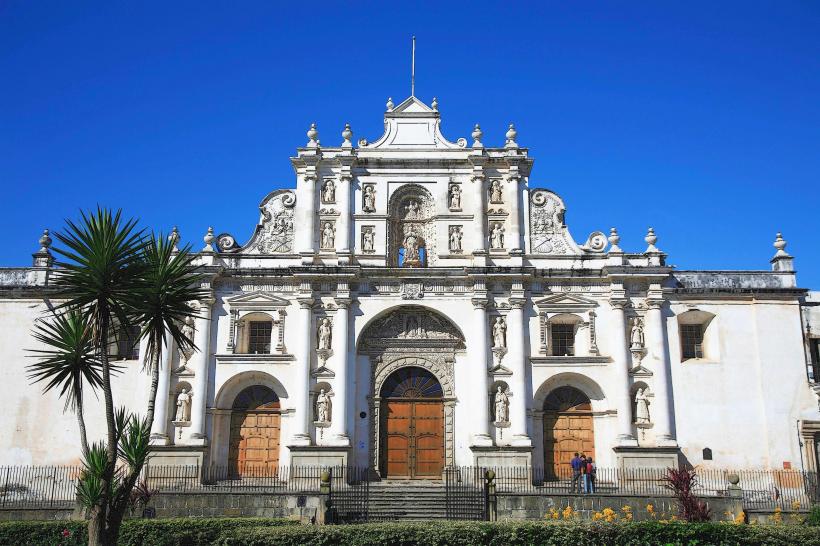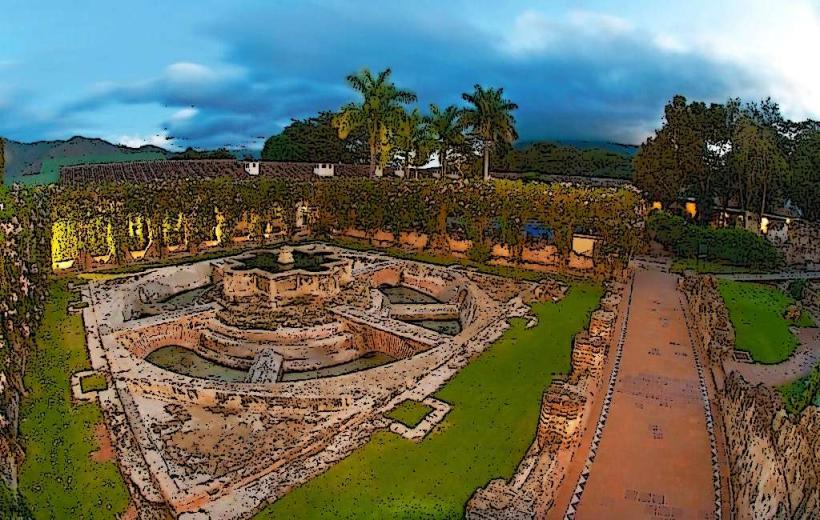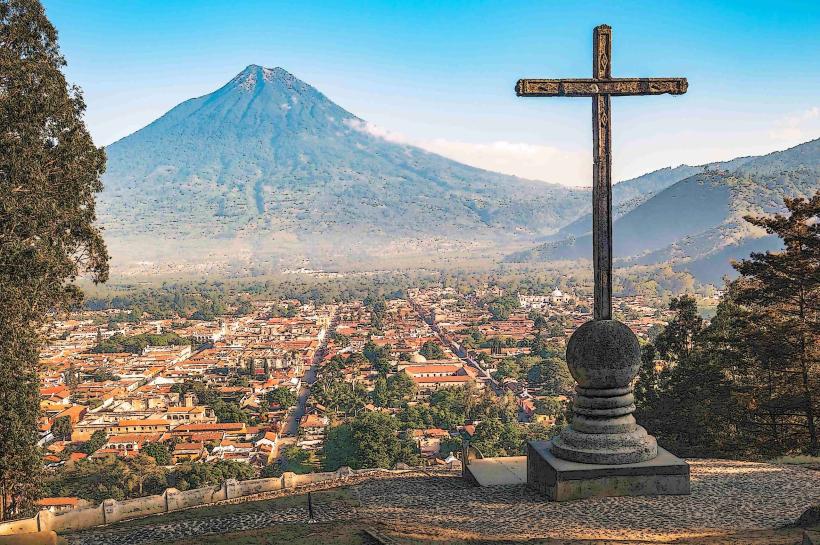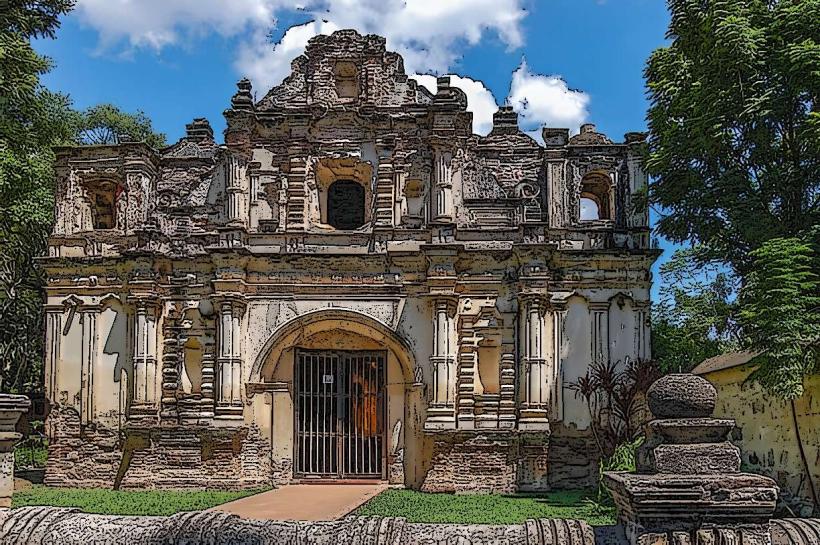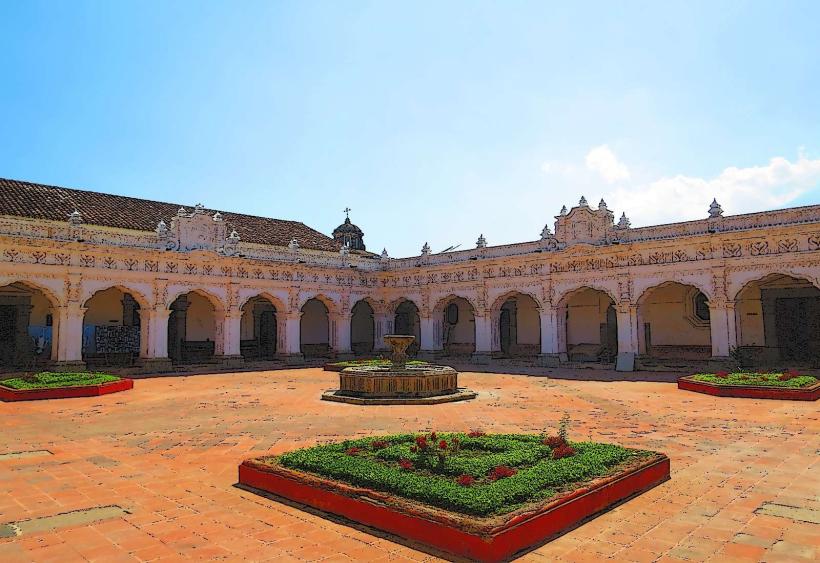Information
Landmark: Convento de las CapuchinasCity: Antigua Guatemala
Country: Guatemala
Continent: North America
The Convento de las Capuchinas (Convent of the Capuchin Nuns) is a historic monastery located in Antigua Guatemala. Built in the early 18th century, it is one of the most notable religious sites in the city, showcasing the city's colonial history, religious devotion, and architectural grandeur. The convent is known for its historical significance and impressive architecture, and it continues to be a symbol of spirituality and resilience in the face of natural disasters.
History and Significance:
The Convento de las Capuchinas was founded in 1736 by the Capuchin Order, a branch of the Franciscan Order. The nuns who lived here were dedicated to a life of strict asceticism and spiritual devotion, following the Capuchin way of life, which emphasized poverty, humility, and prayer. The convent was one of several religious institutions established in Antigua during the colonial period, contributing to the city’s importance as a religious center.
The convent was constructed during a time when Antigua was a major center of Spanish colonial power. The building was designed to provide a peaceful and secluded environment for the nuns, where they could focus on their religious duties away from the distractions of the outside world. The convent was also part of a larger network of religious communities that helped maintain social order and played a key role in the city’s spiritual life.
However, like much of Antigua, the Convento de las Capuchinas was severely damaged in the 1773 earthquake that devastated the city. The nuns were forced to abandon the convent, and it remained in ruins for many years. Today, it stands as a fascinating ruin, offering visitors a glimpse into the past and an opportunity to explore its architectural beauty.
Architectural Features:
The Convento de las Capuchinas is a fine example of colonial architecture with influences of Baroque and Neoclassical styles. Though it was partially destroyed in the earthquake, much of its original structure remains intact, allowing visitors to appreciate its historical design and layout.
Facade:
The convent’s facade is relatively simple but elegant. The front entrance is framed by arched doorways, and the building is adorned with modest decorative details, typical of the Capuchin aesthetic. Unlike some other churches and monasteries in Antigua, the Convento de las Capuchinas does not feature excessive ornamentation, in keeping with the Capuchin Order’s emphasis on simplicity and humility.
Courtyard:
Inside the convent, the central feature is a large open courtyard, a design element common in Spanish colonial monasteries. This area was likely used for contemplation, prayer, and community activities. The courtyard is surrounded by a series of arched arcades that provide shade and offer views of the surrounding gardens. The peaceful and serene atmosphere of the courtyard remains intact, allowing visitors to experience the tranquility that the nuns would have enjoyed.
Chapel:
At one end of the convent, there is a small chapel, which would have been used for daily prayers and religious services by the nuns. The chapel is modestly decorated, with simple wooden pews and a small altar. Though not as ornate as other churches in Antigua, it reflects the Capuchin Order’s preference for minimalism and simplicity in religious practice.
Cell Rooms:
One of the most interesting features of the convent is the nuns’ cells, which are small, simple rooms where the nuns would have lived in solitude. These cells are organized around the central courtyard and were designed to be austere, reflecting the Capuchin nuns' vow of poverty. The rooms feature small windows, allowing minimal light, and would have contained only the most basic furniture. Visitors can enter some of these rooms and get a sense of the austere lifestyle the nuns led.
Surrounding Gardens:
The convent also has gardens that would have been tended by the nuns. These gardens are still visible today and add to the peaceful atmosphere of the convent. The gardens would have been an important part of the nuns' lives, providing food and herbs for both medicinal and culinary purposes.
Cultural and Religious Role:
The Convento de las Capuchinas played an important role in the religious life of Antigua during the colonial period. As a monastic community, it contributed to the city’s spiritual fabric, offering prayer, meditation, and sacred rituals. The nuns were involved in charitable activities, offering aid to the poor and sick, and their role was integral to the social structure of Antigua.
However, after the 1773 earthquake, the convent was abandoned, and it fell into disrepair. Though no longer an active religious site, the convent remains a significant historical landmark. Today, it offers visitors a chance to learn about the Capuchin Order’s role in colonial Guatemala and the broader history of Antigua.
Visiting the Convento de las Capuchinas:
The Convento de las Capuchinas is a popular tourist destination, and it provides a unique opportunity to explore colonial architecture and religious history. Though the convent is in a state of ruin, it has been partially restored and is accessible to the public.
- Location: The convent is located just a short walk from Parque Central, on Calle de las Capuchinas, making it easy to visit while exploring the rest of Antigua.
- Visiting Hours: The convent is typically open to visitors every day, with entrance fees used to support its maintenance.
- Cost: There is usually a modest admission fee for visiting the convent. It's recommended to check for updated information before your visit.
Nearby Attractions:
The Convento de las Capuchinas is close to several other important landmarks in Antigua, including:
- Parque Central: The main square of Antigua, surrounded by important historical buildings, including the Cathedral of Santiago and the Palacio de los Capitanes Generales.
- La Merced Church: A Baroque-style church known for its stunning yellow facade and intricate details.
- Santa Catalina Arch: An iconic structure in Antigua that offers a beautiful view of the Volcan de Agua in the background.
- Antigua Cathedral: A grand church located on Parque Central, rich in historical and religious significance.
Conclusion:
The Convento de las Capuchinas is a remarkable and serene site in Antigua Guatemala. Its historical significance, architectural beauty, and tranquil atmosphere make it a fascinating place to visit. Whether you are interested in learning about colonial history, experiencing the simplicity of monastic life, or simply enjoying the peaceful ambiance of the ruins, the Convento de las Capuchinas is an essential stop for anyone exploring Antigua.

